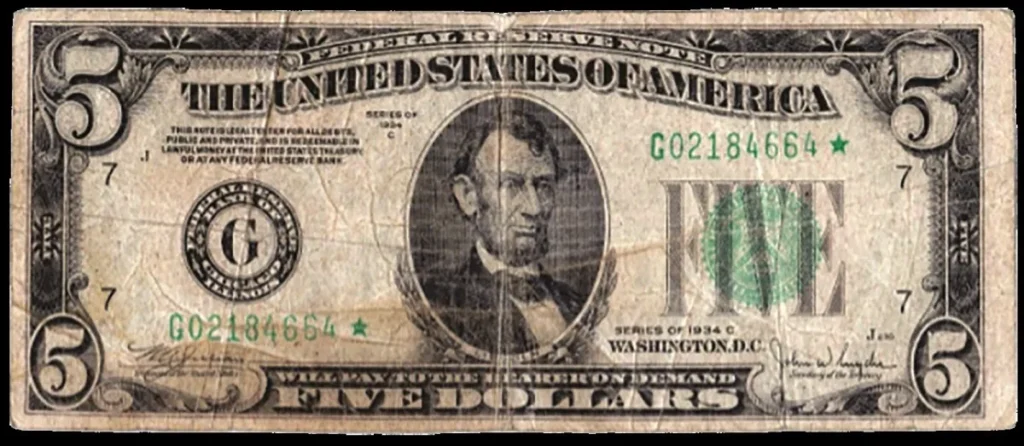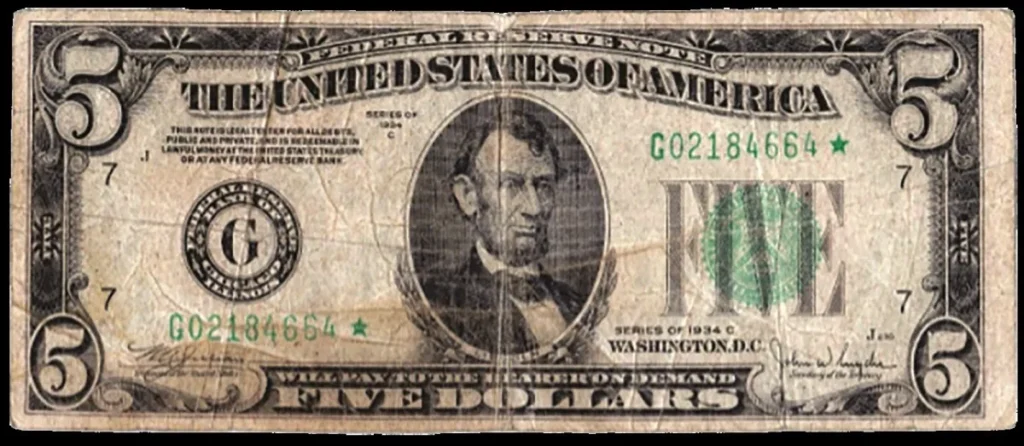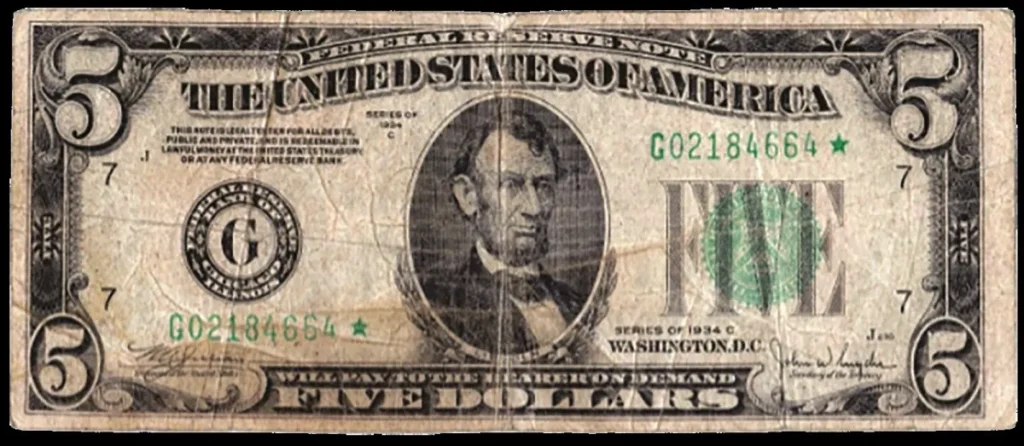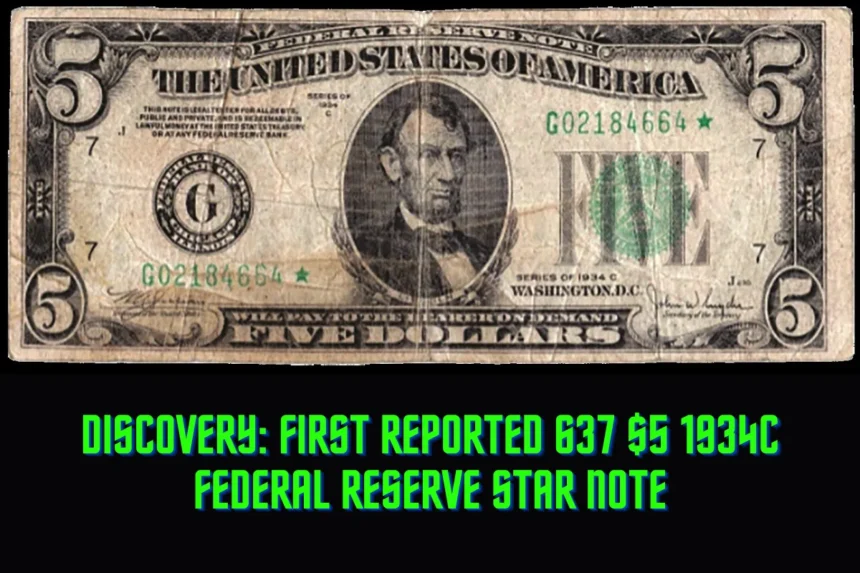The recent discovery of a new micro back 637 variety has set the numismatic community abuzz, marking a significant milestone in the realm of currency collection.
Renowned collector Robert Calderman, known for his expertise showcased in Cherry Picker’s Corner for Paper Money and boasting the most comprehensive collection of 637 varieties, unearthed this rare gem during a Facebook Group Auction in September 2023.
Calderman’s find, the first-ever $5 1934C Federal Reserve star note from any district bearing micro back plate 637, has sparked considerable excitement among collectors.
Classified as a mule, this distinctive note features a disparity in the size of the plate serial numbers on the face and back, with the face plate serial number being macro and the 637-back micro.
Its unique identifier is G02184664* J230/637.

Federal Reserve notes sporting back plate 637 are highly coveted due to their scarcity, with star notes of this variety holding particular allure for collectors.
Currently, only two-star notes each from the 1934A and 1934B series, along with Calderman’s lone 1934C discovery, are reported, all of which are mules.
Notably, none have been reported from the 1934 series, which would entail non-mules featuring micro-sized serial numbers on both the face and back plates.
The utilization of back plate 637 spanned from June 23, 1945, to June 14, 1949, coinciding with a period marked by the use of various $5 face plates, resulting in a rich array of matting varieties.
The reported and potential varieties stemming from this period are detailed in Table 1.
Calderman’s note, featuring Series of 1934C face plate 230, overlaps with the late utilization of back plate feed stock printed from plate 637.
Face plate 230 was initiated on Dec. 9, 1946, certified for use on Dec. 23, 1946, and underwent eight press runs until Feb. 27, 1950, before being canceled on Nov. 15, 1951.

The significance of back plate 637 lies in its unique history. Originating in 1935 as a 12-subject new gauge master plate, it facilitated the production of hundreds of subsequent plates and masters over the following eight years.
Despite its retirement as a master in October 1943, it was repurposed into a production plate during World War II efforts, resulting in the printing of a substantial number of 12-subject backs, including Calderman’s rare find.
The journey to unravel the mysteries surrounding back plate 637 began in earnest when collectors started recognizing mule varieties in the early 1960s.
Subsequent research and discoveries, including Calderman’s recent find, have shed light on the unique characteristics and historical significance of these notes.
As collectors continue to pursue unreported 637 varieties and unearth new star note variations, the allure of these rare specimens remains undiminished.
With each discovery adding to the rich tapestry of currency collecting, the legacy of back plate 637 continues to captivate enthusiasts worldwide.

For further reading and reference on the topic, the following publications offer comprehensive insights into the evolution and significance of back plate 637:
Huntoon, Peter. “Origin of macro plate numbers laid to Secret Service.” Paper Money, vol. 51, Jul-Aug 2012.
Huntoon, Peter. “The enduring allure of $5 micro back plates 629 and 637.” Paper Money, vol. 54, Sep-Oct 2015.
Huntoon, Peter. “Invention and evolution of electrolytic plate making at the Bureau of Engraving and Printing.” Paper Money, vol. 55, Jan-Feb 2016.
Huntoon, Peter, and Jamie Yakes. “Salvaged plates: late-finished and other exotic plates explained.” Paper Money, vol. 52, Nov-Dec 2013.
Huntoon, Peter, and Jamie Yakes. “$5 micro back plates 629 and 637, the big picture.” Bank Note Reporter, vol. 72, Jun 2023.
Yakes, Jamie. “The extraordinary first ten years of micro back 637.” Paper Money, vol. 55, May-Jun 2016.

